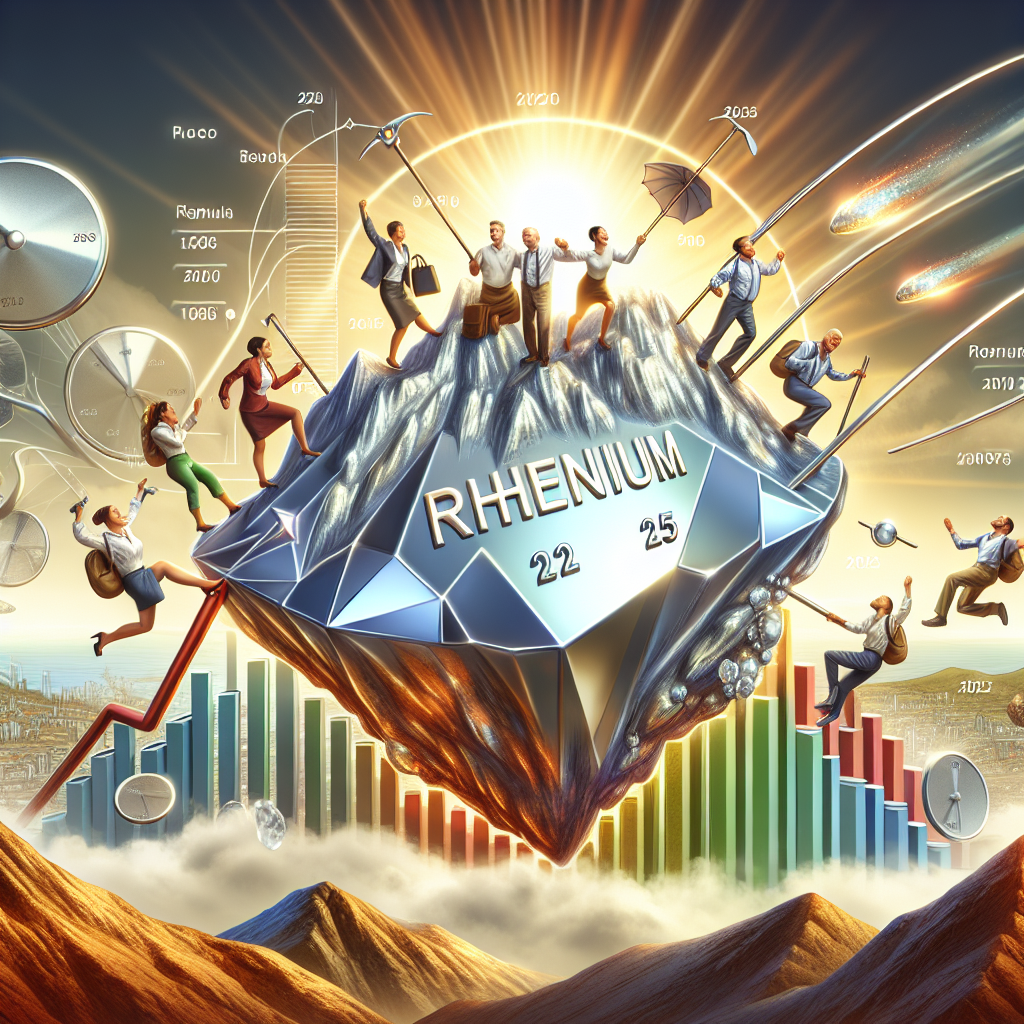The best automated precious metal investment metal insights
Rhenium Market Forecast: Will Prices Continue Their Climb in 2025?
The global Rhenium market is on the rise, with projections estimating a market size of USD 0.22 billion by 2033, up from USD 0.17 billion in 2024. This growth trajectory, exhibiting a CAGR of 3.2% from 2025 to 2033, signals increasing demand for this rare and valuable metal. But will this increased demand translate to continued price increases in 2025? Let’s delve into the factors influencing the rhenium market to forecast potential price movements.
What is Rhenium and Why Is It Important?
Rhenium (Re), element 75 on the periodic table, is a rare, silver-gray, dense metal with exceptional properties. Its high melting point (second only to tungsten), excellent resistance to heat and wear, and superb electrical conductivity make it indispensable in various high-tech industries. Rhenium is primarily extracted as a byproduct of copper-molybdenum mining, making its supply inherently limited.
Key Applications Driving Rhenium Demand
Rhenium’s unique properties make it crucial in several key sectors:
- Aerospace: The dominant application for rhenium is in nickel-based superalloys used in jet engines and gas turbines. These superalloys, containing up to 6% rhenium, maintain their strength and stability at extreme temperatures (often exceeding 1,000°C or 1,832°F), enhancing creep resistance and extending engine life. As the aerospace industry grows, so does the demand for rhenium. For instance, both Boeing and Airbus project a doubling of the global aircraft fleet by 2030, further solidifying the demand for rhenium in this sector.
- Catalysis: Rhenium acts as an excellent catalyst in various chemical processes, particularly in the production of high-octane gasoline and the reduction of nitrogen oxides in automotive catalytic converters.
- Other Applications: Rhenium finds use in electronics (electrical contacts, semiconductors), medical implants, and even nuclear reactors due to its radiation resistance.
Factors Influencing Rhenium Prices
Several factors contribute to the price volatility of rhenium:
- Supply and Demand Dynamics: Rhenium’s scarcity and reliance on byproduct extraction make its supply sensitive to fluctuations in the copper and molybdenum markets. Increased demand from the aerospace and other sectors can quickly outstrip supply, leading to price spikes.
- Geopolitical Factors: Political instability, trade policies, and conflicts in key producing countries can disrupt the rhenium supply chain, impacting prices. For example, disruptions in Russia, a significant rhenium producer, can affect the global supply.
- Recycling: Recycling of rhenium from superalloy scrap and spent catalysts plays a crucial role in supplementing primary production. The cost-effectiveness of recycling operations can influence the overall supply and, consequently, the price of rhenium.
- Technological Advancements: New technologies that either increase the demand for rhenium (e.g., new applications in medical implants) or reduce its consumption (e.g., development of low-rhenium superalloys) can impact prices.
Rhenium Market Trends and Forecast for 2025
Several recent trends and forecasts provide insights into the potential price trajectory of rhenium in 2025:
- Price Increase in Early 2025: At the start of 2025, the price of rhenium was $2,485.90 per kg, reflecting a 1.01% increase since the beginning of the year. This upward trend suggests continued strong demand.
- Supply Deficit: Reports indicate a persistent rhenium deficit due to strong demand from aerospace and medical applications. This deficit could exhaust producer stocks and drive increased recycling efforts.
- Increased Chinese Demand: China’s increasing demand for rhenium, driven by its growing aviation industry and development of aviation engine technology, is putting pressure on the global supply.
- Recycling Challenges: While recycling is crucial, the closure of several scrap recovery facilities in recent years due to lower prices may limit the supply of recycled rhenium.
- USGS Data: According to the U.S. Geological Survey (USGS), the average price for catalytic-grade ammonium perrhenate (APR) in 2023 was $920 per kilogram, higher than the $911 per kilogram in 2022. The estimated rhenium metal pellet price averaged $1,070 per kilogram in 2023, a 5% decrease from the annual average price in 2022.
Will Prices Continue Their Climb in 2025?
Considering the current market dynamics, a continued price climb for rhenium in 2025 appears likely. The key drivers supporting this forecast include:
- Strong Aerospace Demand: The aerospace industry, the primary consumer of rhenium, is experiencing robust growth, driving demand for high-temperature superalloys.
- Supply Constraints: Limited primary production, coupled with challenges in recycling and geopolitical uncertainties, is likely to keep the rhenium supply tight.
- Emerging Applications: New applications in medical implants and other high-tech sectors could further increase demand for rhenium.
However, potential factors that could moderate price increases include:
- Increased Recycling Efforts: If higher prices incentivize increased recycling of rhenium from scrap, this could alleviate some supply pressure.
- Technological Substitutes: The development and adoption of alternative materials or low-rhenium superalloys could reduce demand.
- Economic Slowdown: A global economic slowdown could dampen demand from key industries, impacting rhenium prices.
Navigating the Rhenium Market
For businesses that rely on rhenium, understanding these market dynamics is crucial for strategic planning and risk management. Some key strategies include:
- Securing Long-Term Supply Contracts: Establishing long-term agreements with reliable suppliers can help mitigate price volatility and ensure a stable supply of rhenium.
- Exploring Recycling Options: Partnering with reputable recyclers to recover rhenium from scrap materials can provide a cost-effective and sustainable source of the metal.
- Monitoring Market Trends: Staying informed about market trends, geopolitical developments, and technological advancements can help businesses anticipate price fluctuations and adjust their strategies accordingly.
- Diversifying Supply Sources: Sourcing rhenium from multiple suppliers in different regions can reduce the risk of supply disruptions.
Conclusion
The rhenium market is complex and dynamic, influenced by a variety of factors ranging from aerospace demand to geopolitical events. While forecasting future prices with certainty is impossible, the current trends suggest that rhenium prices are likely to continue their climb in 2025. By understanding the key drivers and potential risks, businesses can navigate this market effectively and secure their supply of this critical metal.




